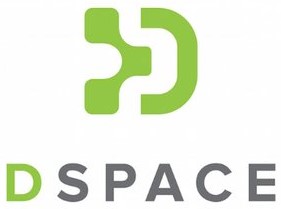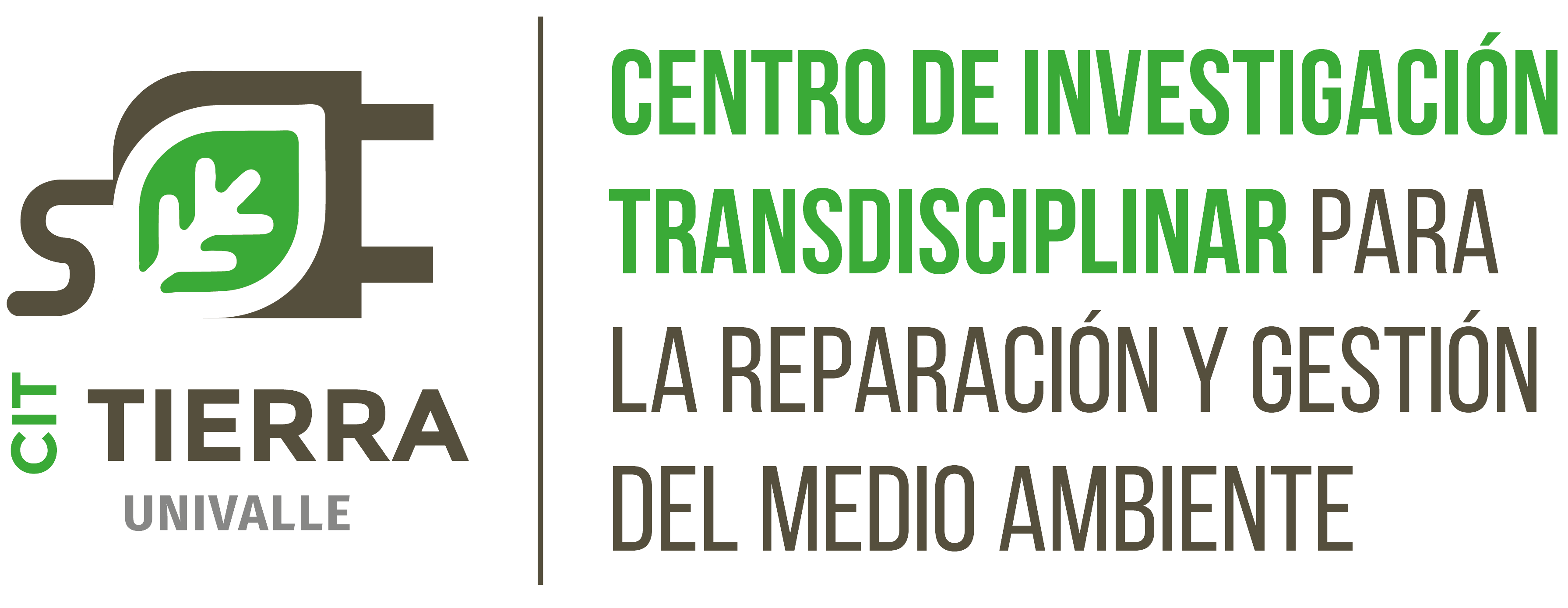Síntesis Experimental de una Solución de Urea grado Automotriz para Vehículos de motor de Combustión a Diésel Aplicado como Aditivo para la Reducción de Emisiones de Óxido de Nitrógeno según Normativa Euro
Experimental synthesis of an automotive grade urea solution for Diesel combustion engine vehicles applied as an additive for the reduction of nitrogen oxide emissions according to EURO regulations
DOI:
https://doi.org/10.52428/20758944.v19iEspecial.453Palabras clave:
AdBlue, Urea, Óxidos de Nitrógeno, SCRResumen
El presente estudio, muestra la síntesis del aditivo de solución de urea grado automotriz o AdBlue, a partir de la urea granulada proveniente de la planta petroquímica de amoniaco y urea (PAU), como propuesta de aplicación secundaria a esta materia prima. El análisis de caracterización de urea YPFB mostró los siguientes resultados: contenido de nitrógeno de 46,2 %, densidad aparente 719,33 kg/m3, contenido Biuret 0,93 % w/w y formaldehido 0,61 % w/w. Se caracterizó el aditivo conforme a la normativa ISO 22241:2019, obteniendo los siguientes resultados: concentración de urea 32,5%, densidad 1092 g/mL, índice de refracción 1,3836, Biuret 0,31 % w/w, aldehídos 2816,80 mg/kg, pH 9,4 a 20 °C y alcalinidad 0,007 % w/w, que a excepción del contenido de Biuret y Aldehídos, el aditivo se encuentra enmarcado dentro especificaciones de dicha normativa. Se verificó el desempeño del aditivo sintetizado en laboratorios de química y petróleo bajo el nombre de Blue Truck frente a otras marcas comerciales importadas AdBlue y BlueDEF, certificadas por la Verband der Automobilindustrie (VDA). Estos aditivos fueron probados en un camión con especificación Euro 5, mostrando una reducción de gases de NOx por debajo del valor especificado de la normativa Euro 5, que es de 2 g/kWh para NOx.
Descargas
Citas
A. Fendri, P. B. (2015). AdBlue Quality Control using Impedance Spectroscopy. Proceedings SENSOR, 830-832. doi:10.5162/sensor2015/P7.3
https://doi.org/10.5162/sensor2015/P7.3 DOI: https://doi.org/10.5162/sensor2015/P7.3
A. Terzis, M. K. (2018). Splashing characteristics of diesel exhaust fluid (AdBlue) droplets impacting on urea-water solution films. Experimental Thermal and Fluid Science, 102, 152-162. doi:10.1016/j.expthermflusci.2018.11.002
https://doi.org/10.1016/j.expthermflusci.2018.11.002 DOI: https://doi.org/10.1016/j.expthermflusci.2018.11.002
Adam Polcar, J. Č. (05 de 2016). Influence of Urea Concentration on Refractive Index of AdBlue Fluid Evaluated by Regression Analysis. 64(2), 509-516. doi:10.11118/actaun201664020509
https://doi.org/10.11118/actaun201664020509 DOI: https://doi.org/10.11118/actaun201664020509
Ante Kozina, G. R. (12 de Marzo de 2020). Analysis of methods towards reduction of harmful pollutants from diesel engines. (C. M. Almeida, Ed.) Cleaner Production, 262. doi:10.1016/j.jclepro.2020.121105
https://doi.org/10.1016/j.jclepro.2020.121105 DOI: https://doi.org/10.1016/j.jclepro.2020.121105
ASTM D1747. (2009). Standard Test Method for Refractive Index of Viscous Materials. Estados Unidos : ASTM.
B. Ashok, A. J. (2022). Chapter 3 - NOx and PM trade-off in IC engines. NOx Emission Control Technologies in Stationary and Automotive Internal Combustion Engines, 69-93. doi:10.1016/B978-0-12-823955-1.00003-6
https://doi.org/10.1016/B978-0-12-823955-1.00003-6 DOI: https://doi.org/10.1016/B978-0-12-823955-1.00003-6
Boxi Shen, Z. L. (Diciembre de 2017). Development of a 1D Urea-SCR system model coupling with wall film decomposition mechanism based on engine bench test data. Energy Procedia, 142, 3492-3497. doi:10.1016/j.egypro.2017.12.235
https://doi.org/10.1016/j.egypro.2017.12.235 DOI: https://doi.org/10.1016/j.egypro.2017.12.235
Calliope Panoutsou, S. G. (3 de 03 de 2021). Advanced biofuels to decarbonise European transport by 2030: Markets, challenges, and policies that impact their successful market uptake. Energy Strategy Reviews, 34. doi:10.1016/j.esr.2021.100633
https://doi.org/10.1016/j.esr.2021.100633 DOI: https://doi.org/10.1016/j.esr.2021.100633
COVENIN 1138. (2018). Fertilizantes. Determinación del Nitrógeno Total (Metodo Kjeldahl). Venezuela: FODENORCA. Obtenido de http://www.sencamer.gob.ve/sencamer/normas/1138-2018.pdf
Denghui Wang, N. D. (15 de 04 de 2019). Analysis of urea pyrolysis in 132.5-190 °C. Fuel, 242, 62-67. doi:1016/j.fuel.2019.01.011
https://doi.org/10.1016/j.fuel.2019.01.011 DOI: https://doi.org/10.1016/j.fuel.2019.01.011
Diesel Technology Forum. (2023). Diesel Technology Forum. Obtenido de https://dieselforum.org/selective-catalytic-reduction-scr
DieselNET. (11 de 11 de 2022). DieselNET. Obtenido de https://dieselnet.com/news/2022/11eu.php
Eelco Mostert, H. (. (07 de 01 de 2020). United States Patente nº US 10,526,281 B2. Obtenido de https://patents.google.com/patent/US10526281B2/en
EUR-Lex. (06 de 09 de 2022). EUR-Lex Access to European Union Law. Obtenido de https://eur-lex.europa.eu/legal-content/EN/TXT/?uri=celex%3A32009R0595
Fernando Daniel Ramos, M. S. (01 de 01 de 2016). Biocombustibles. Ciencia Hoy, 25(147), 69-73. Obtenido de eu-repo/semantics/altIdentifier/url/http://cienciahoy.org.ar/2016/01/biocombustibles/
Filip Kuternowski, M. S. (6 de 07 de 2020). Modeling of Urea Decomposition in Selective Catalytic Reduction (SCR) for Systems of Diesel Exhaust Gases Aftertreatment by Finite Volume Method. Computational Catalysis, 749. doi:10.3390/catal10070749
https://doi.org/10.3390/catal10070749 DOI: https://doi.org/10.3390/catal10070749
Guevara-Zavala, R. (2018). Desarrollo de un sistema de control y monitoreo en un banco de pruebas Urea-SCR. Universidad Autónoma de Nuevo León, Facultad de Ingeniería Mecánica y Eléctrica (FIME), Mexico.
Hakan Caliskan, K. M. (01 de 06 de 2017). Environmental, enviroeconomic and enhanced thermodynamic analyses of a diesel engine with diesel oxidation catalyst (DOC) and diesel particulate filter (DPF) after treatment systems. Energy, 128, 128-144. doi:10.1016/j.energy.2017.04.014
https://doi.org/10.1016/j.energy.2017.04.014 DOI: https://doi.org/10.1016/j.energy.2017.04.014
Hoon Lee, T. H. (10 de 02 de 2016). Experimental verification of optimized NOX reduction strategies in a decrepit Euro-3 diesel engine retrofitted with a cooled EGR system. Journal of Mechanical Science and Technology, 30, 2873-2880. doi:10.1007/s12206-016-0546-2
https://doi.org/10.1007/s12206-016-0546-2 DOI: https://doi.org/10.1007/s12206-016-0546-2
Ibrahim Aslan, R. A. (2015). The pollutant emissions from diesel-engine vehicles and exhaust aftertreatment systems. Clean Technologies and Environmental Policy, 17, 15-27. doi:10.1007/s10098-014-0793-9
https://doi.org/10.1007/s10098-014-0793-9 DOI: https://doi.org/10.1007/s10098-014-0793-9
Instituto Nacional de Estadisticas (INE). (29 de Mayo de 2020). Instituto Nacional de Estadisticas (INE). Obtenido de Instituto Nacional de Estadisticas (INE): https://www.ine.gob.bo/index.php/publicaciones/estadisticas-del-parque-automotor-2005-2019/
ISO 22241-2. (2019). Diesel Engines, NOx reduction agent AUS32 - Part 2: Test Methods. Alemania: ISO.
Louise Gren, V. B. (08 de 2021). Effects of renewable fuel and exhaust aftertreatment on primary and secondary emissions from a modern heavy-duty diesel engine. Journal of Aerosol Science, 156. doi:10.1016/j.jaerosci.2021.105781
https://doi.org/10.1016/j.jaerosci.2021.105781 DOI: https://doi.org/10.1016/j.jaerosci.2021.105781
M. Börnhorst, O. D. (21 de 07 de 2021). Advances and challenges of ammonia delivery by urea-water sprays in SCR systems. Progress in Energy and Combustion Science, 87. doi:10.1016/j.pecs.2021.100949
https://doi.org/10.1016/j.pecs.2021.100949 DOI: https://doi.org/10.1016/j.pecs.2021.100949
Meessen, J. (10 de 11 de 2014). Urea Synthesis. Chemie Ingenieur Technik, 86(12), 2180-2189. doi:10.1002/cite.201400064
https://doi.org/10.1002/cite.201400064 DOI: https://doi.org/10.1002/cite.201400064
Ming-Feng Hsieh, J. W. (Enero de 2012). Adaptive and Efficient Ammonia Storage Distribution Control for a Two-Catalyst Selective Catalytic Reduction System. Dynamic Systems, Measurement, and Control, 134, 1. doi:10.1115/1.4005372
https://doi.org/10.1115/1.4005372 DOI: https://doi.org/10.1115/1.4005372
NTE INEN 222. (2013). Fertilizantes. Determinación del contenido de Humedad. Ecuador: Instituto Ecuatoriano de Normalización INEN. Obtenido de https://www.normalizacion.gob.ec/buzon/normas/222-1R.pdf
NTE INEN ISO 7837. (2014). Fertilizantes. Determinación de la densidad aparente sin compactar en fertilizantes de grano fino. Ecuador: Instituto Ecuatoriano de Normalización INEN. Obtenido de https://www.normalizacion.gob.ec/buzon/normas/nte_inen_iso_7837.pdf
Official Journal of the European Union, Regulation (EC). (18 de 06 de 2009). EUR-Lex.
PalaniKumar Gurusamy, U. G. (17 de 04 de 2017). Measurement of Diesel Exhaust Fluid Concentration in Urea-SCR after-Treatment System. International Journal of Precision Engineering and Manufacturing, 18(8), 1085-1092. doi:10.1007/s12541-017-0127-z
https://doi.org/10.1007/s12541-017-0127-z DOI: https://doi.org/10.1007/s12541-017-0127-z
Pavla Fojtíková, D. K. (19 de 09 de 2019). Tracking AdBlue properties during tests of selective. International Journal of Energy Research, 1-11. doi:10.1002/er.4921
https://doi.org/10.1002/er.4921 DOI: https://doi.org/10.1002/er.4921
Samsung Engineering. (2013). Business Portfolio Petrochemicals. Obtenido de https://www.samsungengineering.com/business/unit/common/buView
Sandro Gierth, S. H. (19 de 01 de 2022). Urea Conversion for Low-Temperature Selective Catalytic Reduction in a Swirled Diesel Exhaust Gas Configuration. Chemical Engineering Technology, 45(4), 610-619. doi: 10.1002/ceat.202100571
https://doi.org/10.1002/ceat.202100571 DOI: https://doi.org/10.1002/ceat.202100571
Shahariar, G. M. (Marzo de 2018). Investigation of urea aqueous solution injection, droplet breakup and urea decomposition of selective catalytic reduction systems. Mechanical Science and Technology, 32, 3473-3481. doi:10.1007/s12206-018-0651-5
https://doi.org/10.1007/s12206-018-0651-5 DOI: https://doi.org/10.1007/s12206-018-0651-5
Stamicarbon. (11 de 2017). STAMI AdBlue Technologies. Obtenido de https://www.stamicarbon.com/sc_files/142/download?token=vn2qF-Fq
Tan, L. (Noviembre de 2017). CFD studies on effects of SCR mixers on the performance of urea conversion and mixing of the reducing agent. Chemical Engineering & Processing: Process Intensification, 123, 82-88. doi:10.1016/j.cep.2017.11.003
https://doi.org/10.1016/j.cep.2017.11.003 DOI: https://doi.org/10.1016/j.cep.2017.11.003
Theodoros Grigoratos, G. F. (15 de Marzo de 2019). Real world emissions performance of heavy-duty Euro VI diesel vehicles. Atmospheric Environment, 201, 348-359. doi:10.1016/j.atmosenv.2018.12.042
https://doi.org/10.1016/j.atmosenv.2018.12.042 DOI: https://doi.org/10.1016/j.atmosenv.2018.12.042
Tina Kegl, A. K. (2020). Chapter 2 Diesel Engines. Nanomaterials for Environmental Application Fuel Additives for Diesel Engines, 5-28. doi:10.1007/978-3-030-54708-0_2
https://doi.org/10.1007/978-3-030-54708-0_2 DOI: https://doi.org/10.1007/978-3-030-54708-0_2
Tommaso Selleri, A. D. (23 de 03 de 2021). An Overview of Lean Exhaust deNOx Aftertreatment Technologies and NOx Emission Regulations in the European Union. Catalysts, 11(3). doi:10.3390/catal11030404
https://doi.org/10.3390/catal11030404 DOI: https://doi.org/10.3390/catal11030404
Tommaso Selleri, R. G. (27 de Enero de 2022). Measuring Emissions from a Demonstrator Heavy-Duty Diesel Vehicle under Real-World Conditions - Moving Forward to Euro VII. Catalysts, 12(2), 184. doi:10.3390/catal12020184
https://doi.org/10.3390/catal12020184 DOI: https://doi.org/10.3390/catal12020184
Toyo Engineering Corporation. (2012). ACES21 Urea Process by Toyo. Toyo Engineering. Obtenido de https://www.toyo-eng.com/jp/ja/products/petrochmical/urea/technical_paper/pdf/ACES21_Brochure.pdf
Usame Demir, A. K. (24 de Agosto de 2021). Experimental investigation of the effect of urea addition to fuel on engine performance and emissions in diesel engines. FUEL, 331, 1. doi:10.1016/j.fuel.2021.122578
https://doi.org/10.1016/j.fuel.2021.122578 DOI: https://doi.org/10.1016/j.fuel.2021.122578
Verband der Automobilindustrie. (2020). Verband der Automobilindustrie. Obtenido de Verband der Automobilindustrie: https://en.vda.de/en/topics/innovation-and-technology/ad-blue/AdBlue-brand-list-and-licensees-list.html
Yihao Xie, F. P. (Abril de 2020). Diesel sulfur content impacts on Euro VI soot-free vehicles: Considerations for emerging markets. The International Council on Clean Transportation , 11, 1-15.
Yunhua Zhang, A. L. (2024). Effect of catalyst diesel particulate filter aging and catalyst loadings on particulate emission characteristics from a diesel vehicle. Journal of Environmental Sciences, 136, 35-44. doi:10.1016/j.jes.2022.10.014
https://doi.org/10.1016/j.jes.2022.10.014 DOI: https://doi.org/10.1016/j.jes.2022.10.014
Publicado
Cómo citar
Número
Sección
Licencia
Derechos de autor 2023 Sergio Weimar Lazarte Mercado, Carla Alejandra Apaza Rojas, Jaime Hamel Fonseca

Esta obra está bajo una licencia internacional Creative Commons Atribución 4.0.
Los autores/as que publiquen en esta revista aceptan las siguientes condiciones:
- Los autores/as conservan los derechos de autor y ceden a la revista el derecho de la primera publicación, con el trabajo registrado con la licencia de atribución de Creative Commons 4.0, que permite a terceros utilizar lo publicado siempre que mencionen la autoría del trabajo y a la primera publicación en esta revista.
- Los autores/as pueden realizar otros acuerdos contractuales independientes y adicionales para la distribución no exclusiva de la versión del artículo publicado en esta revista (p. ej., incluirlo en un repositorio institucional o publicarlo en un libro) siempre que indiquen claramente que el trabajo se publicó por primera vez en esta revista.
- Se permite y recomienda a los autores/as a compartir su trabajo en línea (por ejemplo: en repositorios institucionales o páginas web personales) antes y durante el proceso de envío del manuscrito, ya que puede conducir a intercambios productivos, a una mayor y más rápida citación del trabajo publicado.















